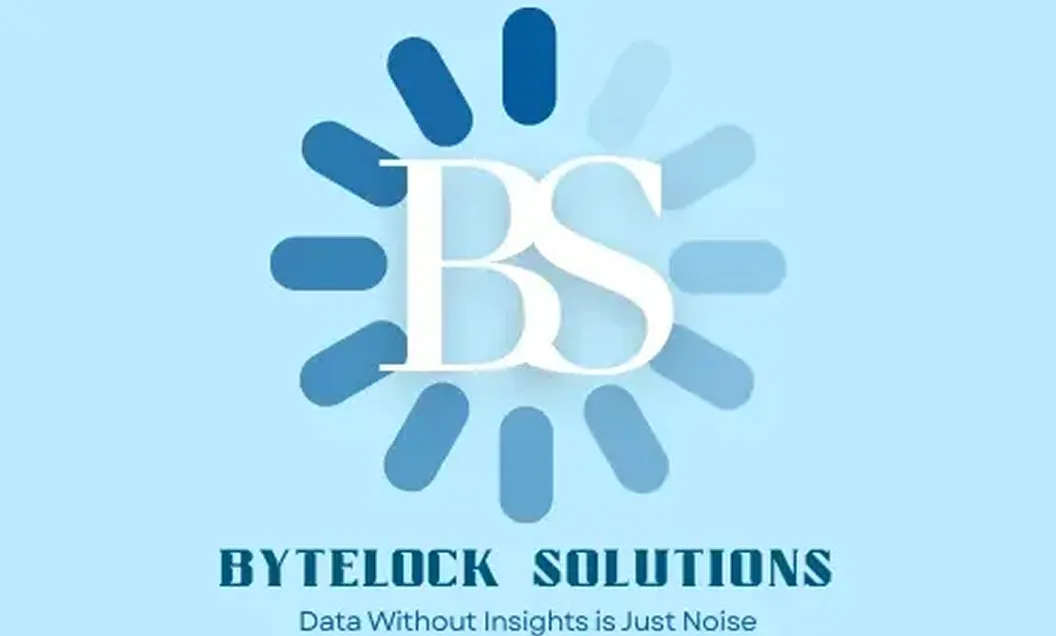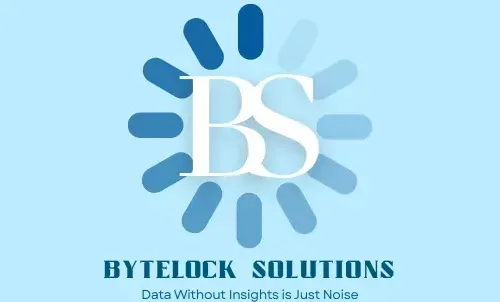Our Blog
Insights That Drive Smarter Decisions
Stay ahead with expert articles, industry updates, and practical strategies from the ByteLock Solutions team.

From Mess to Mastery: How to Clean Your Data Without Losing Your Mind
From Mess to Mastery: How to Clean Your Data Without Losing Your Mind
Data is powerful—when it’s clean. But dirty data? It’s like having a leaky boat: no matter how fast you row, you’ll never get where you want. Every time you make decisions based on poor data—duplicates, inconsistencies, missing values—you waste time, money, and trust.
If you're dealing with complex, messy data, this post is for you. You’ll come away with a clear roadmap for cleaning your data, maintaining it, and avoiding common pitfalls. Let’s dive in.
What Drama Dirty Data Brings
Before we talk solutions, let’s be real about problems. Dirty data shows up in many ways, and its impact is more than just “annoying”:
Bad decisions & missed opportunities. Maybe your sales forecast is way off because you have duplicate customer entries. Or maybe you can't trust your marketing attribution because events are being tagged inconsistently. These don’t just hurt analytics—they hurt the bottom line.
Wasted time & morale. Analysts redoing work. Teams arguing about which number is “correct.” Frustration when dashboards contradict each other.
Loss of trust. Stakeholders tune you out when reports are consistently wrong. It’s hard to be taken seriously if people assume your numbers are “sketchy.”
Compliance risks, especially in regulated industries. Inaccurate or missing data can lead to misreporting, legal issues, or fines.
Scaling becomes painful. When you build workflows, pipelines, or models on dirty foundations, small issues magnify quickly.
According to Gartner, many organizations lose millions of dollars annually due to poor data quality. Gartner
What Exactly is “Data Quality”?
Data Quality refers to the overall reliability, accuracy, and usefulness of data for its intended purpose. High-quality data ensures that organizations can make informed decisions, maintain trust, and drive efficiency across processes.
🔑 Key Aspects of Data Quality
Accuracy – Data correctly represents real-world values (e.g., correct customer names, valid financial figures).
Completeness – All required information is present without missing values.
Consistency – Data follows the same format and rules across systems, avoiding confusion.
Timeliness – Data is available and updated at the right time to remain relevant.
Uniqueness – Each record is distinct without unnecessary duplicates.
Validity – Data conforms to defined rules, formats, and business logic.
Step-by-Step Roadmap to Clean Data
Here’s how you can go from messy to mostly clean—and then maintain that cleanliness.
Audit & Profiling
Sample your datasets: identify missing values, suspicious outliers, format inconsistencies.
Use tools or scripts to measure error rates, missingness, duplication. For example, run SQL queries to count nulls, duplicates; use profiling features in BI / data platforms.
Define Standards & Rules
Decide on naming conventions, valid formats, required fields.
Document these: what is “valid date”, what does “active customer” mean, what fields can be null.
Clean / Correct Data
Remove duplicates (merge based on unique keys).
Fill in missing data where possible (from reliable sources) or decide where removal is better than filling.
Normalize formats (e.g. dates, currencies, capitalization).
Correct known errors (typos, formatting issues).
Validation & Testing
Once cleaned, test with real reports. If numbers look off, trace back.
Use automated tests where possible: e.g. constraints, business rule validations.
Automate Cleaning Where It Makes Sense
Use ETL / ELT pipelines with built-in cleaning steps.
Use tools or code (Python, SQL) to write reusable cleaning jobs.
Embed Monitoring & Feedback
Set up dashboards / alerts for key data quality metrics (percent missing, duplicate rate, invalid formats).
Encourage feedback from users (“this number looks wrong”) and act on it.
Tools & Tech That Help
You don’t have to reinvent things. There are tools and approaches that ease the work:
Open source and commercial tools for profiling & cleaning (e.g. Great Expectations, AWS Glue DataBrew, custom scripts). Matillion+3cloudtech.com+3GeeksforGeeks+3
Use of modern data pipeline architectures that allow modularity and versioning.
Schema enforcement, constraints in databases / data stores.
Metadata tracking so you know where data came from, when it was last updated.
Preventing the Mess from Coming Back
Cleaning once isn’t enough. To keep data clean over time:
Governance & Ownership. Who owns which data sources? Who is accountable when errors arise? Make roles clear.
Training & Culture. Educate data producers (e.g. people entering CRM, logs, customer-facing systems) about format standards, why consistency matters.
Embed Quality in Input Points. Validate at source (for example, front-end form, APIs). Better to reject bad data early than clean after.
Regular Audit Cycles. Periodic profiling, checking over time, not just a one-off.
Documentation & Living Rules. Document standards and update them as things change.
Measuring Success
You’ll want to show this work has paid off. Here are KPIs / signals to track:
Reduction in missing / null values in key fields.
Drop in duplicate records.
Reduced time for report generation / fewer corrections needed.
Improved forecast or model accuracy (if using data in predictions).
Stakeholder feedback: are people trusting the analytics more? Fewer complaints?
Business impact: cost saved / revenue uplift / risk mitigated.
Example: A Small-Business Turnaround
Let me walk you through a hypothetical scenario that might feel familiar.
Case: A marketing agency noticed their campaign ROI reports were wildly inconsistent. One dashboard said ROI was 150%, another said 90% for the same campaign period.
What they found:
The CRM had duplicate leads because some leads came from ad platforms and also manual uploads.
UTM tracking parameters were inconsistent (some spelled “utm_source” wrong; others had uppercase vs lowercase mismatches) → campaign attribution got split.
Some conversions were logged manually but delayed, causing stale counts.
Actions they took:
Set up a data profiling audit & dashboard to see missing / inconsistent UTM parameters.
Automated cleanup scripts to standardize UTM formats and merge duplicates.
Instituted input validation on forms to enforce required campaign fields.
Trained marketing & ops team on campaign tracking standards.
Result (after 3-4 weeks):
Attribution matched across dashboards (~95% matching).
Duplicate lead count reduced by 70%.
ROI reporting became more trusted; teams spent less time reconciling numbers and more time optimizing campaigns.
Common Pitfalls & How to Avoid Them
Some mistakes people make in cleaning data:
PitfallWhy It HappensHow to AvoidTrying to clean every data source at onceOverwhelm, shifts in priorities, lack of resourcesPrioritize: start with high-impact / high-risk datasets.Doing manual cleanup onlyNot scalable, error‐prone, easy to regressAutomate what you can; build pipelines with validation.Not involving stakeholders earlyStandards don’t match reality; resistanceInvolve those entering data, using reports, leadership.Neglecting maintenanceData drifts; new sources bring new variationsSet up recurring checks & refinement cycles.Letting tools drive everythingTools are helpful, but they don’t replace thinkingUse tools wisely; always keep people / business context in view.

MENU
CUSTOMER CARE
LEGAL
FOLLOW US
Copyright ©2025. BYTELOCK SOLUTIONS. All Rights Reserved.
